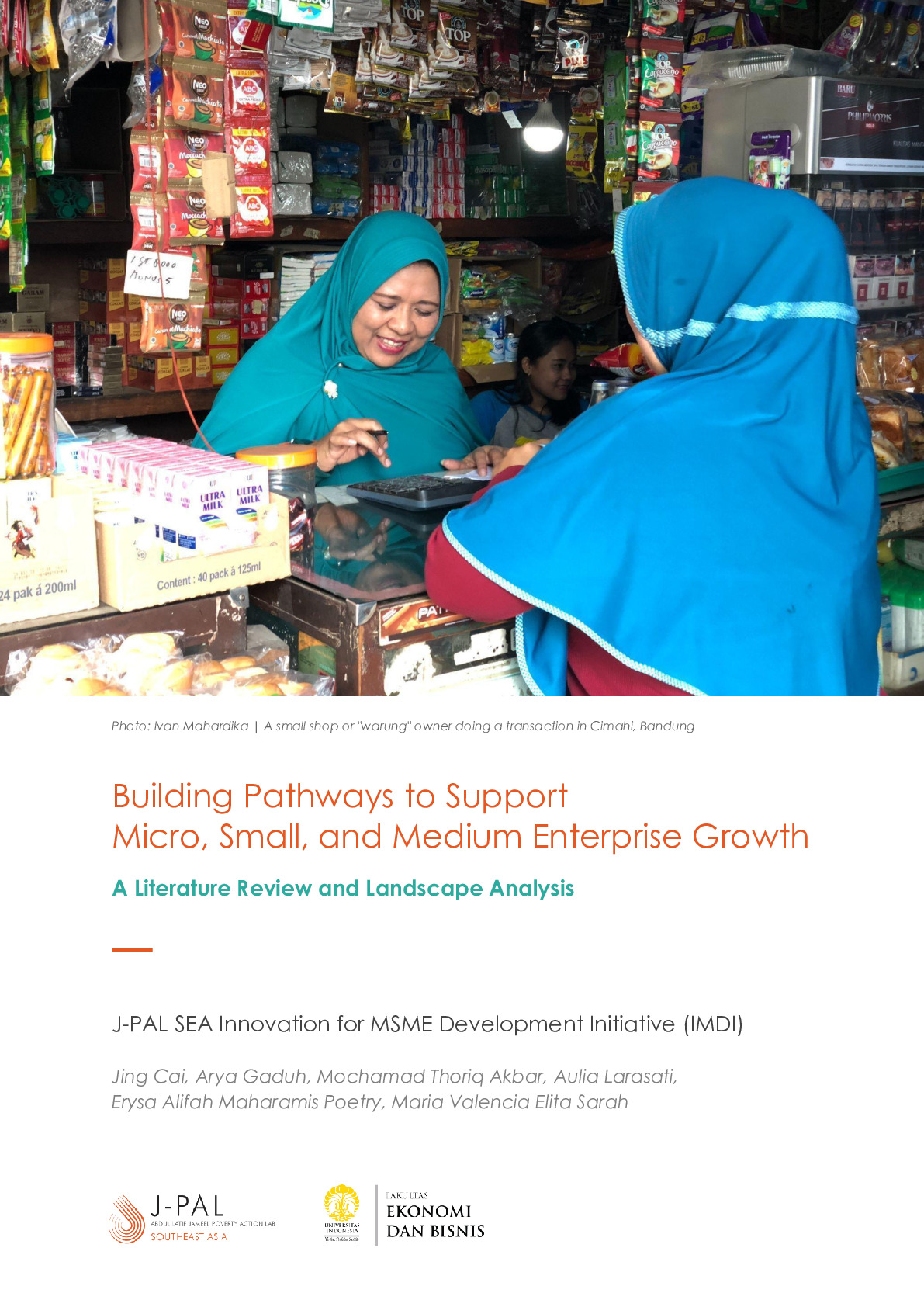Building pathways to support micro, small, and medium enterprise growth
Micro, small, and medium enterprises (MSMEs) have historically dominated Indonesia’s economic landscape. Collectively, around 65 million MSMEs act as the backbone of Indonesia’s economy, contributing to 61 percent of Indonesia’s the country’s gross domestic product (GDP) and creating 97 percent of employment. Recognizing the potential of MSMEs, the government of Indonesia (GoI) outlined several targets for MSME growth, such as increasing the production of value-added goods, and MSMEs' export contribution. Aligned with these targets, the government, nongovernmental organizations, the private sector, and development organizations also have programs targeted to MSMEs, such as digital onboarding and training, consulting services, and logistic aggregator services.
However, a central challenge remains on how the programs can be maximized to encourage MSMEs’ growth. Existing research in low- and middle-income countries shows that common programs such as microcredit and general business training often do not yield positive business outcomes for microenterprises. For example, microcredit access tends to benefit only experienced firms, and the content of standard business trainings are often too general for it to boost the performance of businesses of different sizes (e.g., McKenzie and Woodruff 2008; Fafchamps et al., 2014; Banerjee et al., 2019; Breza, Karlan, and Hou 2023). Understanding how programs may have diverse outcomes for different scales of businesses calls for revisiting existing programs in Indonesia, their targeting methods, and the impact of such programs. Doing so would assist the government in allocating scarce resources to programs that will achieve the desired outcomes for MSME development.
The white paper consists of three sections: section one elaborates a global literature review on the impact of interventions to target growth-oriented firms, increase their capacity, and improve their market access. Section two lays out the MSME landscape in Indonesia, summarizing existing programs targeted to solve challenges faced by MSMEs. Lastly, Section three summarizes promising research topics and room for improvements to support evidence-based policymaking in Indonesia.
